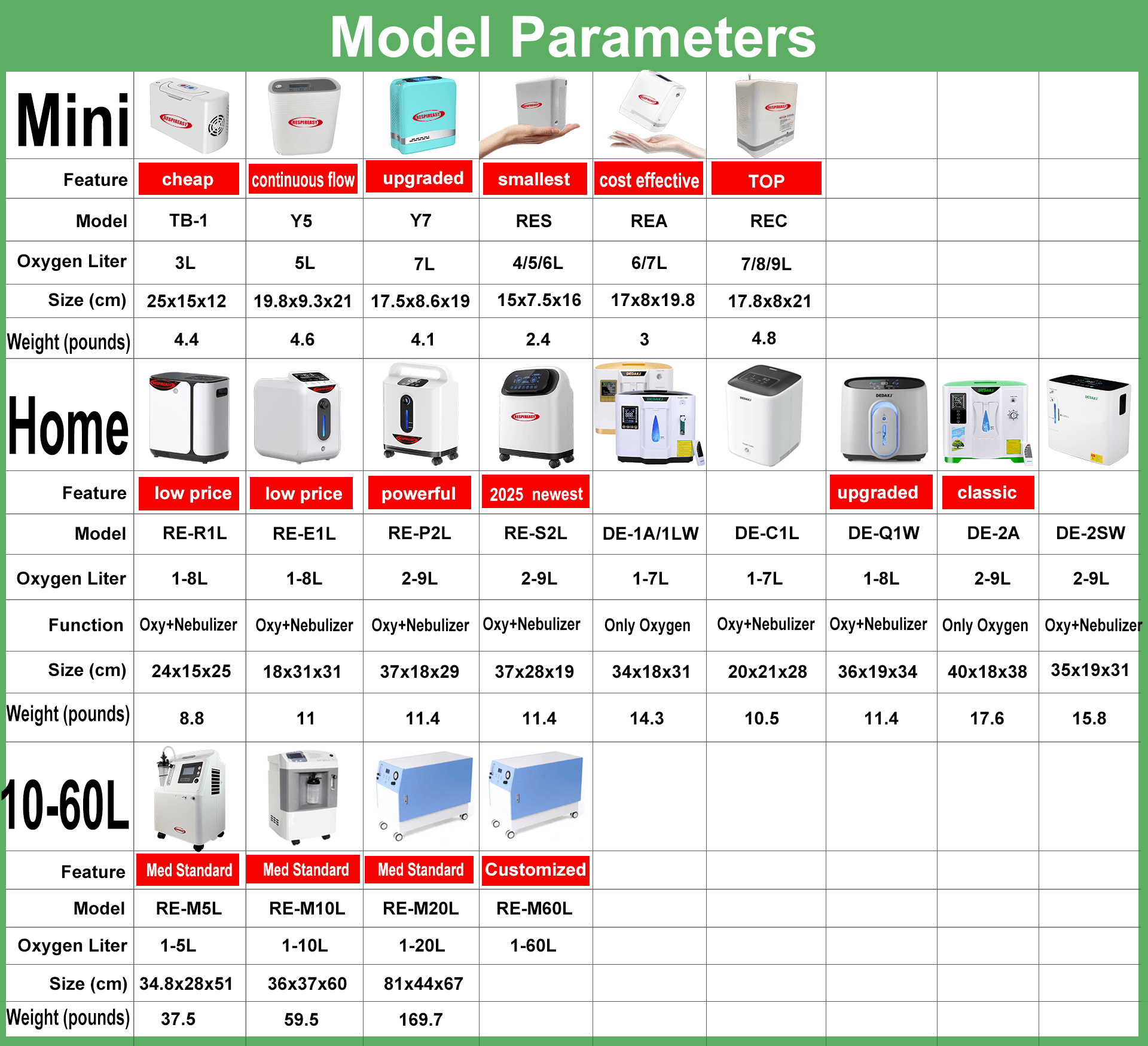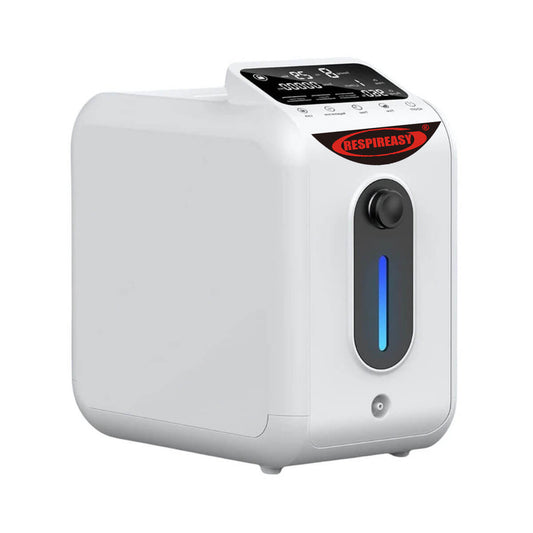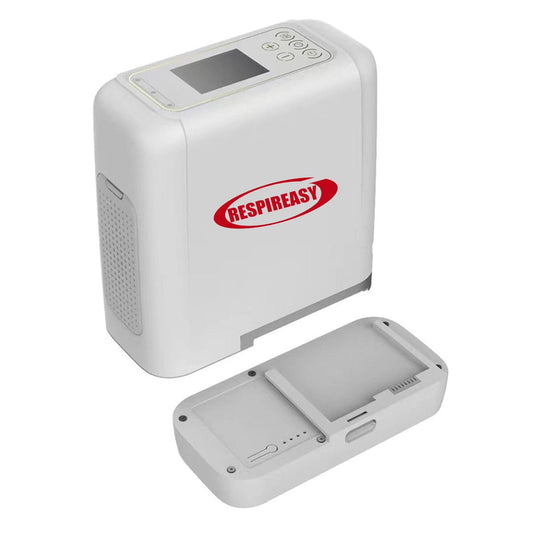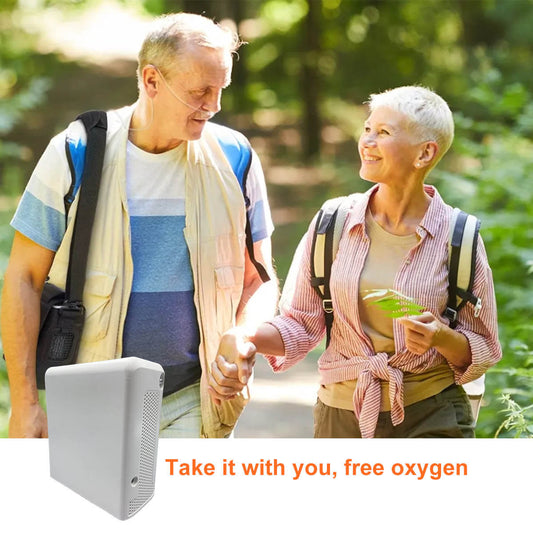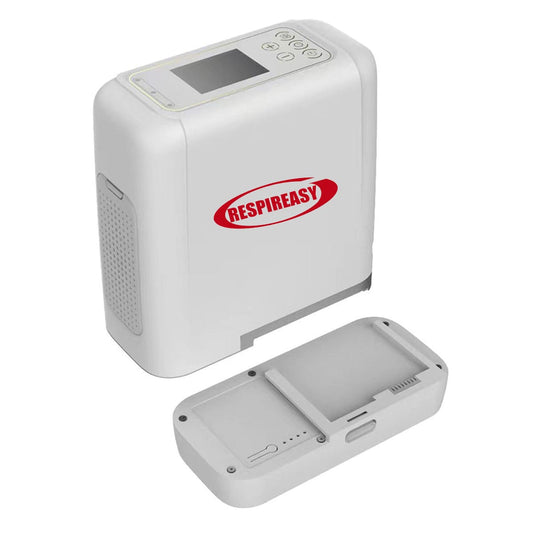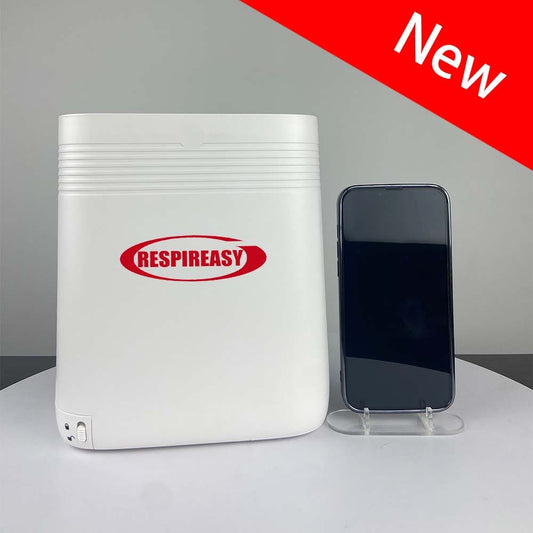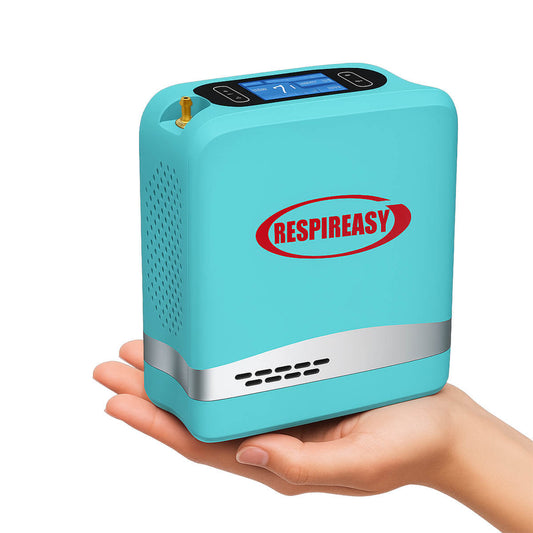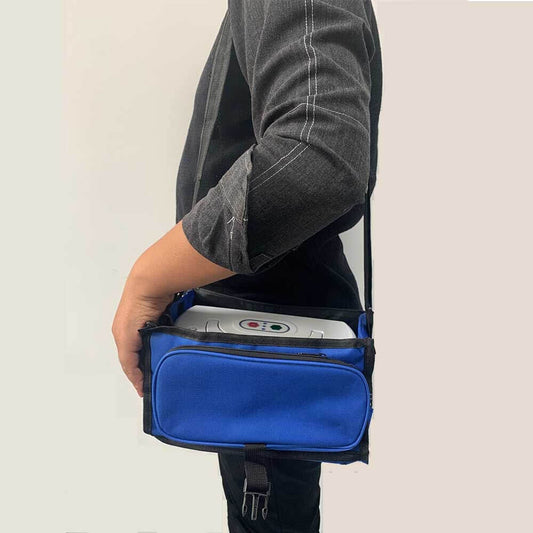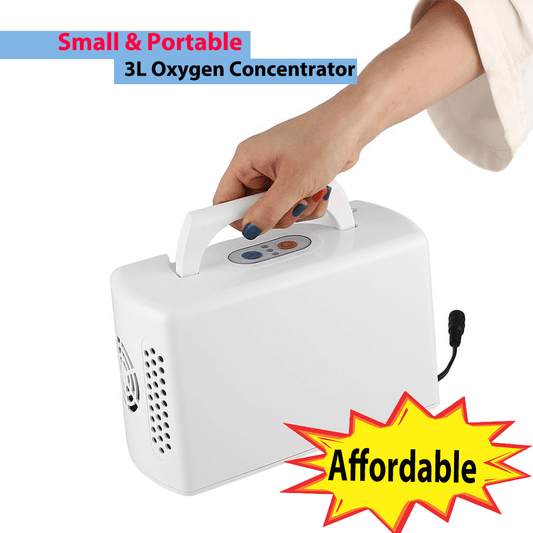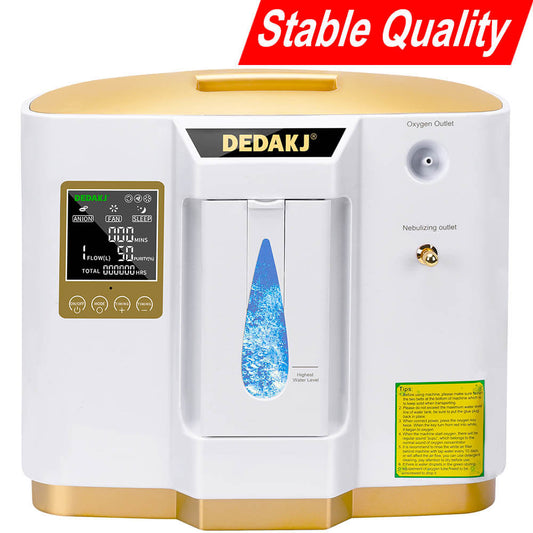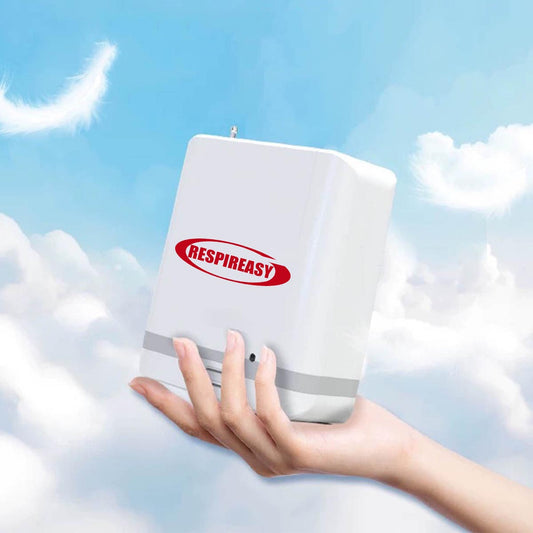Have You Chosen the Right Home Oxygen Concentrator?

Home oxygen therapy is an important part of the treatment for patients with chronic respiratory diseases, offering significant clinical benefits, including reduced hospitalizations, prevention of disease exacerbations, improved quality of life, and lower mortality rates. With advancements in oxygen therapy technology and its widespread application, oxygen therapy has gradually moved from hospitals to the home, becoming part of the daily management of many patients with chronic respiratory diseases. Therefore, home oxygen concentrators are particularly important for patients requiring long-term oxygen therapy. However, the market offers a wide variety of oxygen concentrators with varying functions. So, what should you pay attention to when purchasing an oxygen concentrator?
I. Introduction to Home Oxygen Concentrators
A home oxygen concentrator is a device that generates medical-grade oxygen in a home environment. It typically provides supplemental oxygen therapy support for patients with chronic respiratory diseases (such as COPD and pulmonary fibrosis) or those experiencing high-altitude hypoxia. Home oxygen concentrators help patients obtain the oxygen therapy they need at home.
II. Oxygen Production Principles of Home Oxygen Concentrators
- Oxygen production principles include pressure swing adsorption (PSA) and membrane separation.
Pressure Swing Adsorption (PSA), also known as molecular sieve oxygen generation, utilizes the different adsorption and release capacities of molecular sieves for gas separation. The oxygen concentrator first compresses indoor air, purifies it through an air purifier and dryer, and then sends it through a switching valve into an adsorption tower. Inside the tower, nitrogen is adsorbed by the molecular sieves, while oxygen accumulates at the top and then enters a storage tank. After further filtration for odor removal, dust removal, and sterilization, clean oxygen is obtained, typically with an oxygen concentration exceeding 90%. It boasts advantages such as low energy consumption and low cost, and is currently the mainstream technology used in home oxygen concentrators.
Membrane Separation: This method uses a semi-permeable membrane to separate oxygen and nitrogen from the air. It offers advantages such as low cost and simple process, but its disadvantages include high requirements for membrane performance and a typically low oxygen concentration of only around 30%, making it unsuitable for long-term home oxygen therapy.
III. How to Choose a Suitable Home Oxygen Concentrator
Different medical conditions and physical states require different oxygen flow rates and concentrations. Please consult a doctor or professional to clarify your specific needs. Medical devices should be purchased through official store, and to get the good quality and service guarantee.
DEDAKJ Official Store
🏆🏆🏆Buy now (3-6 days delivered)
DEDAKJ is top-rated oxygen concentrator supplier, providing both 10-20 liters medical oxygen concentrators, 1-9 LPM continuous flow home oxygen breathing machines, traveling use portable O2 concentrators and other original DEDAKJ oxygen accessories.
Guarantee:
- * 180 Days Lowest Price Guaranteed
-
* 1 Year Quality Warranty Guaranteed
- * Free Rechange; Free Replace Guaranteed
When choosing a home oxygen concentrator, you should consider the following factors:
Oxygen Concentration: Different oxygen concentrators have different output oxygen concentrations. It is recommended to choose one that meets the national standard of (93±3)% oxygen concentration, as this is an important indicator to ensure treatment effectiveness.
Oxygen Flow Rate: Choose an appropriate oxygen flow rate based on your needs. Home health oxygen concentrators generally have a flow rate of 1-2 L/min, while medical oxygen concentrators are recommended to have a flow rate of 5 L/min or higher.
Noise Level: Oxygen concentrators produce some noise during operation. It is recommended to choose one with lower noise levels. Industry standards stipulate that the noise level should be ≤60 decibels, with below 45 decibels being considered comfortable.
Filtration System: Choosing an oxygen concentrator with a high-efficiency filtration system can extend the lifespan of the device and ensure that the oxygen inhaled by the patient is pure and uncontaminated.
Safety: Choose an oxygen concentrator with multiple safety features, such as self-checking upon startup and overcurrent protection in abnormal situations.
Equipment Size: Consider the size of your home and portability requirements.
Price and Maintenance Costs: Choose equipment with a high cost-performance ratio while meeting your needs. Understand the maintenance requirements of oxygen concentrators and choose equipment that is easy to clean and maintain.
Brands and Manufacturers: Choosing well-known and reputable oxygen concentrator brands can ensure product quality and after-sales service. Understanding the manufacturer's production scale, technical strength, and market share helps in assessing the reliability and stability of the product.
IV. Main Types of Home Oxygen Concentrators
Classification of Home Oxygen Concentrators:
- Portable Oxygen Concentrators: Small in size, suitable for use during travel or outdoor activities.
- Stationary Home Oxygen Concentrators: Medium in size, suitable for use in home environments.
- Powerful Medical Oxygen Concentrators: Large in size, 10 liters 20 liters or higher oxygen production, suitable for use in medical institutions or for patients requiring high concentrations of oxygen.
V. Precautions for Using Home Oxygen Concentrators
(1) Maintenance of the Oxygen Tube: The oxygen tube should be cleaned every 3 days. The nasal inhaler or mask on the oxygen tube should be cleaned after each use, and can be wiped with medical alcohol. It is recommended to replace the oxygen tube every 2 months. (1) The oxygen cannula should be kept dry and free of water droplets.
(2) Oxygen flow rate: Select an appropriate oxygen flow rate and wear the oxygen cannula correctly. Do not adjust the oxygen flow rate arbitrarily to avoid harming the body.
(3) Humidification and disinfection of oxygen therapy: Home oxygen therapy is mostly performed using low-flow oxygen therapy. The patient's own airway has heating and humidification functions, which can generally meet the needs of airway humidification. For patients receiving low-flow (≤4 L/min) oxygen therapy, routine humidification treatment is not recommended. However, for patients with oxygen flow rates >4 L/min or who complain of upper respiratory tract dryness, humidification treatment can be considered to improve tolerance; in addition, for patients who have lost the function of upper respiratory tract heating and humidification after tracheotomy, humidification treatment is recommended. It is recommended to clean the humidification bottle every 5-7 days. If using distilled or purified water, rinsing with clean water is sufficient. If using mineral water, it is recommended to soak it in white vinegar before rinsing. The water in the humidification bottle should be changed daily. Hands should be kept clean when changing or operating the humidification device. The oxygen tubing and humidification device should be replaced, cleaned, and disinfected regularly according to the product's usage requirements. Any dirt should be cleaned promptly. Maintain good indoor air circulation.
(4) Target Range: The range of SpO2 maintained after oxygen therapy varies slightly depending on the disease, with a target range of 88%-94%.
(5) Adverse Reactions: Common adverse reactions to home oxygen therapy include skin and mucous membrane damage caused by nasal cannula masks, oxygen toxicity, CO2 retention, and atelectasis caused by oxygen therapy. Strengthening health and safety education can reduce adverse reactions.
VI. Daily Maintenance of the Oxygen Concentrator
Before using the oxygen concentrator, carefully read the instruction manual to prepare for potential malfunctions during use. To maintain the normal operation and extend the lifespan of your home oxygen concentrator, the following routine maintenance is required:
(1) Cleaning: Clean the equipment regularly to prevent dust and bacteria accumulation. Wipe the outer casing with a soft cloth and avoid using chemical cleaners.
(2) Environment: Place the equipment in a cool, well-ventilated area, away from direct sunlight. Never cover the oxygen concentrator with anything.
(3) Safety: Ensure the equipment is properly grounded and placed on a stable surface, away from heat sources and open or closed flames. Regularly check the power cord and plug to ensure they are not damaged or worn.
(4) Filter Replacement: Most oxygen concentrators have a primary and a secondary filter.
- The primary filter is filter cotton, usually provided in pairs, which can be replaced. Replace it every 1-2 months. Filter cotton is a consumable and should be replaced promptly.
- The secondary filter is generally not reusable and is recommended to be replaced every 3 months. The specific interval can be adjusted according to usage. If you notice any abnormal operation of the oxygen concentrator or a decrease in oxygen purity, you should also replace the secondary filter immediately.
References:
[1] Chinese Medical Association, Chinese Medical Association Journal, Chinese Medical Association General Practice Branch, et al. Guidelines for home oxygen therapy for adults with respiratory diseases in China (2024) [J]. Chinese Journal of General Practitioners, 2025, 24(1): 11-27. DOI: 10.3760/cma.j.cn114798-20241016-00818.
[2] O′Driscoll BR, Howard LS, Earis J, et al. BTS guideline for oxygen use in adults in healthcare and emergency settings [J]. Thorax, 2017, 72(Suppl 1): ii1ii90. DOI: 10.1136/thoraxjnl2016209729.
[3] AARC clinical practice guideline. Oxygen therapy in the home or alternate site health care facility: 2007 revision & update[J]. Respir Care, 2007, 52(8):1063-1068.
[4] Liang Zongan, Xia Jingen. Respiratory Therapy Tutorial[M]. 2nd ed. Beijing: People's Medical Publishing House, 2023
[5] Li Yulian, Li Hong. Research progress on long-term home oxygen therapy nursing for patients with chronic obstructive pulmonary disease[J]. Chinese Journal of Nursing, 2019, 54(11):1746-1751.DOI:10.3761/j.issn.02541769.2019.11.030.































